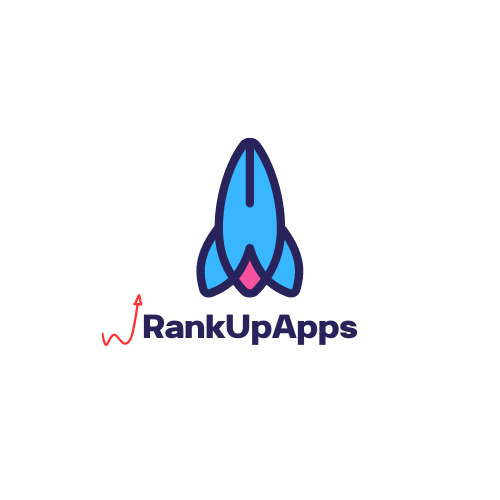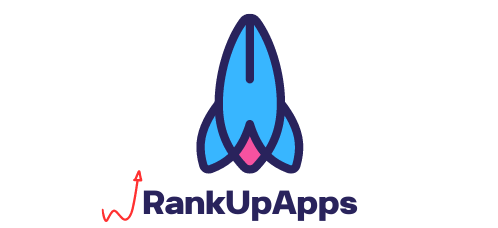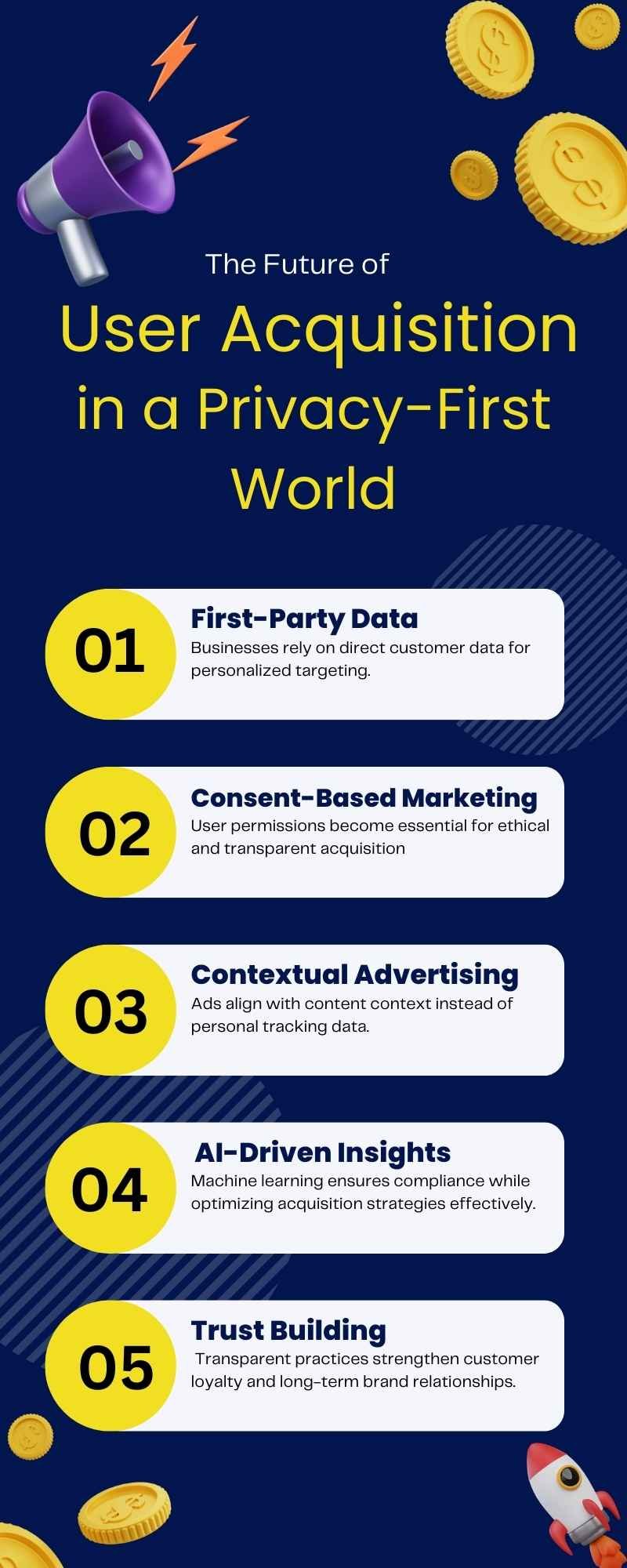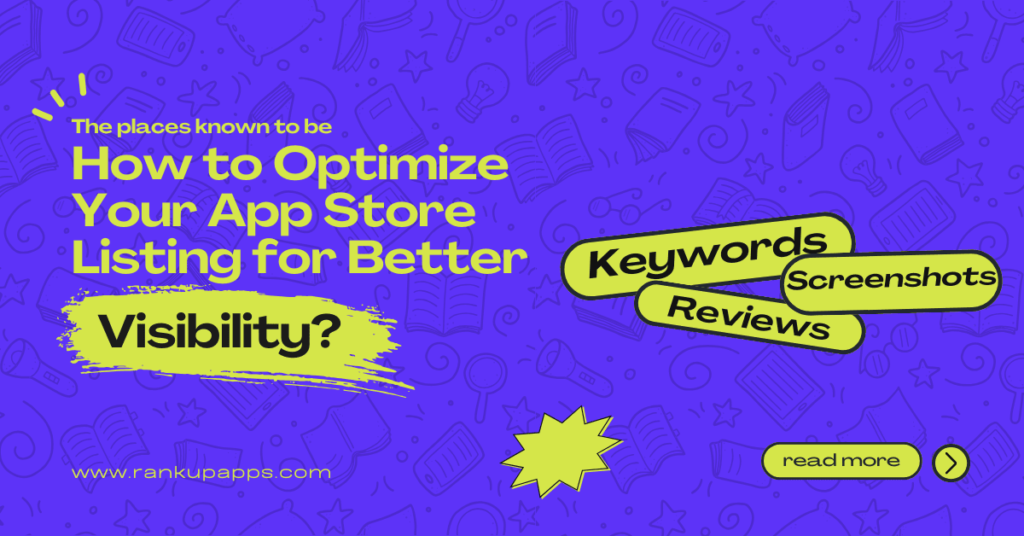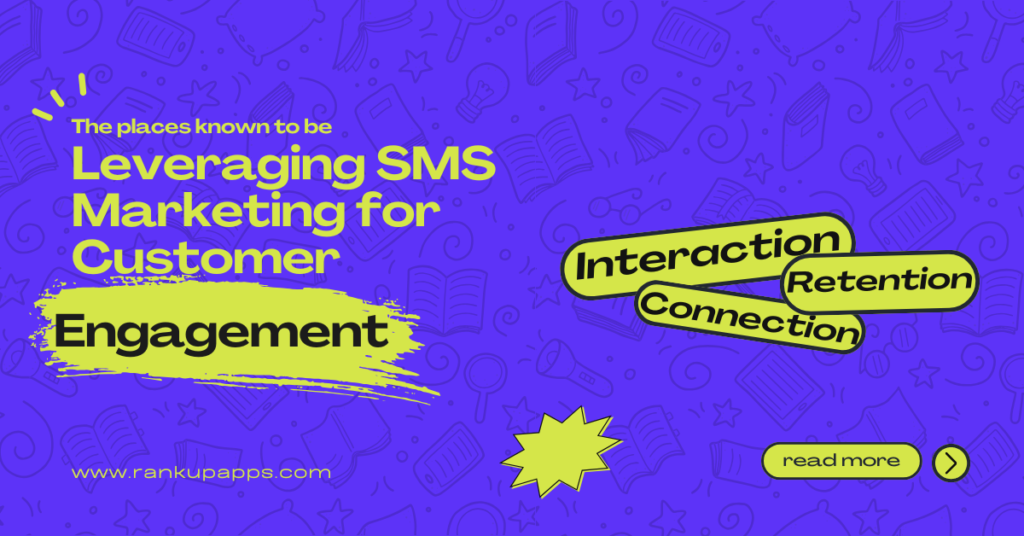Picture this: a small startup launches an app with zero buzz. No one knows about it, no one downloads it, and the idea quietly fades away. Now imagine the opposite, an app that skyrockets because its team cracked the code of a strong user acquisition strategy. That’s the difference between being forgotten and becoming a market leader. In 2025, the competition is fiercer, but so are the opportunities. Users are spending more time online, exploring new platforms, and expecting more innovative, personalized experiences.
It is where growth marketing steps in. It’s not about quick hacks; it’s about building a repeatable system that attracts, engages, and retains the right users. From leveraging AI-driven targeting to experimenting with content that resonates, the path is about testing, learning, and scaling what works. The brands that win are the ones treating acquisition as a long-term engine, not a one-off campaign. At its core, every sustainable business in 2025 will be powered by a well-defined user acquisition strategy.
What is a User Acquisition Strategy?
Imagine launching a great app, but no one knows it exists. That’s where a user acquisition strategy steps in. It’s the plan that helps you attract the right people, turn them into loyal users, and scale growth. A strong customer acquisition strategy isn’t just about downloads or sign-ups; it’s about building a steady flow of engaged users. Consider Netflix’s free trials or startups that use referral rewards. Each move is designed to pull people in and keep them coming back. In short, user acquisition is the fuel that powers business growth.
Why a User Acquisition Strategy is Essential for Growth in 2025
Every growing business needs more than just visibility; it needs a steady flow of new customers. That’s where a user acquisition strategy becomes essential. It’s the blueprint that helps brands attract, convert, and retain people who bring real value. Without it, companies risk spending blindly on ads or relying only on word of mouth, which slows momentum.
A well-structured user acquisition strategy does more than bring traffic. It creates a repeatable system that drives predictable growth. For example, mobile apps that plan early often see faster app installs and stronger engagement compared to those that chase trends. Businesses that refine their approach consistently can also scale user base without overspending.
Key Benefits of Having a Strategy
- Predictable Growth: Build a clear roadmap for reaching and retaining customers.
- Efficient Spending: Focus budgets on channels that deliver the highest ROI.
- Better Retention: Acquire users who are more likely to stay engaged long-term.
- Scalability: Easily expand campaigns to new markets while keeping costs under control.
Core Components of a High-Impact User Acquisition Strategy
A user acquisition strategy is more than just bringing new users on board; it’s about building a system that fuels growth and sustains long-term success. To make it impactful, you need clear goals, smart channels, and a balance between acquisition and customer retention. Here are the core components:
- Precise Targeting: Define your audience by demographics, behaviour, and intent. The sharper the targeting, the higher the conversion.
- Channel Mix: Blend paid ads, organic content, influencer marketing, and referral programs to reach users at multiple touchpoints.
- Compelling Value Proposition: Communicate why your product solves a real problem. Please keep it simple, benefit-driven, and relatable.
- Seamless Onboarding: A smooth first experience ensures users don’t drop off early. Micro-tutorials or guided flows help boost adoption.
- Data-Driven Optimisation: Track CAC, LTV, churn, and engagement to refine campaigns continuously.
- Growth Loop Integration: Encourage actions that naturally bring in more users, such as referrals, reviews, or social shares.
- Customer Retention Focus: Acquisition without retention creates a leaky bucket. Regular updates, loyalty programs, and personalised engagement keep users active.
Best User Acquisition Channels in 2025 (Paid and Organic)
Choosing the proper channels can make or break your user acquisition strategy. In 2025, the most successful brands balance paid acquisition with organic acquisition channels to maximise growth while controlling costs. Paid methods bring quick visibility, while organic ones build long-term trust and retention.
Key Paid Acquisition Channels
- Social Media Ads (Meta, TikTok, LinkedIn) – High targeting precision for niche audiences.
- Search Ads (Google, Bing) – Best for intent-driven users.
- App Store Ads are powerful for mobile-first businesses.
- Affiliate & Influencer Campaigns – Fast reach through trusted voices.
Leading Organic Acquisition Channels
- Content Marketing – Blogs, videos, and guides that educate and convert.
- SEO & ASO – Essential for discoverability and sustained traffic.
- Social Communities – Reddit, Discord, and Facebook groups for engagement.
- Referral Programs – Word-of-mouth remains one of the most cost-effective drivers.
5 Proven User Acquisition Strategies to Drive Growth
Building a sustainable growth engine requires more than just ads or quick hacks. It’s about creating a user acquisition strategy that blends consistency, creativity, and data-driven decision-making. Below are five proven methods that businesses use to drive measurable results, strengthen brand loyalty, and scale apps effectively.
1. Leverage Paid Advertising with Precision
Paid ads remain one of the fastest ways to acquire users, but success comes from precision. Platforms like Google Ads, Meta Ads, and TikTok allow hyper-targeting based on demographics, behaviours, and intent. Instead of spraying budgets everywhere, focus on creating campaigns that align with your core audience. Use A/B testing to refine creatives and track ROI. When executed right, this user acquisition strategy can deliver immediate traction and set the stage for growth marketing.
2. Build Strong Organic Growth Channels
Organic reach is slower but far more sustainable. Investing in SEO, content marketing, and app store optimisation helps you build visibility without relying heavily on paid spend. For instance, ranking for long-tail keywords or optimising your app title and description can steadily drive new installs. Pairing blogs, videos, and social content with a consistent brand voice positions your business as trustworthy, allowing you to scale apps while lowering acquisition costs in the long run.
3. Use Referral and Reward Programs
Referrals are powerful because people trust recommendations from friends and family. Successful apps like Dropbox and PayPal proliferated through simple reward-driven referrals. Offer meaningful incentives such as credits, discounts, or exclusive access that motivate users to share. The trick is keeping the process frictionless. A well-designed referral program can turn every customer into a growth partner, making this user acquisition strategy one of the most cost-effective options for long-term growth.
4. Invest in Influencer and Partnership Marketing
Influencers and brand collaborations provide instant access to targeted communities. A fitness app partnering with micro-influencers on Instagram can build authentic credibility faster than traditional ads. Similarly, co-marketing with complementary brands expands reach without massive costs. Partnerships also allow you to experiment with bundled offers or exclusive campaigns. For growth marketing, these alliances bring both new users and higher retention rates because they come through trusted voices.
5. Optimise Onboarding and Retention Flows
Acquisition doesn’t end when someone downloads your app; it begins there. A smooth onboarding process increases activation rates, while personalised push notifications, in-app tips, and email sequences keep users engaged. Brands like Duolingo use gamification to retain users, ensuring the funnel doesn’t leak. A well-structured user acquisition strategy accounts for retention, because scaling apps requires not just attracting users but also keeping them active and loyal.
By combining these strategies, businesses can balance quick wins with sustainable growth. Paid campaigns bring scale, organic channels reduce costs, referrals fuel virality, partnerships build trust, and retention ensures longevity. Together, they form a powerful engine to drive growth marketing and scale apps in competitive markets.
Paid vs. Organic User Acquisition Strategy: Which Delivers Better ROI?
Choosing between paid and organic user acquisition strategies depends on your goals, budget, and long-term vision. Paid campaigns deliver quick results, but costs can rise if customer lifetime value doesn’t exceed cost per acquisition. Organic growth, through SEO, content, and social engagement, takes time but builds lasting trust and sustainable traffic. The most effective brands often blend both approaches, using paid ads to scale fast while investing in organic channels for compounding returns. A balanced user acquisition strategy maximises ROI by aligning short-term wins with long-term growth.
| Factor | Paid Acquisition | Organic Acquisition |
| Speed of Results | Immediate | Slow, long-term |
| Cost per Acquisition | Higher | Lower over time |
| Customer Lifetime Value | Depends on targeting & spend | Usually stronger |
| Scalability | Quick but costly | Gradual and sustainable |
Pros and Cons
Paid Acquisition
- Pros: Fast growth, measurable results, and scalability.
- Cons: High cost per acquisition, reduced customer loyalty if not optimised.
Organic Acquisition
- Pros: Stronger customer lifetime value, lower long-term costs, and brand trust.
- Cons: Slow to build, requires consistent effort and content quality.
Leveraging Technology and AI in User Acquisition Strategy
Technology is reshaping how brands grow. A modern user acquisition strategy isn’t just about reaching more people; it’s about reaching the right people with precision. With AI in marketing, businesses can predict user behaviour, personalise experiences, and improve conversion rates. Automation tools also reduce manual work, making campaigns faster and more effective.
Here are some powerful tools to enhance your approach:
- AI-driven analytics – Track user behaviour and predict churn.
- Marketing automation tools – Schedule campaigns, segment audiences, and send personalised messages.
- Chatbots – Offer instant support and improve onboarding.
- Predictive targeting – Use machine learning to show ads to high-value users.
By combining human creativity with technology, your user acquisition strategy becomes scalable and efficient, giving you a clear edge in today’s competitive market.
Case Studies: Real-World User Acquisition Strategies That Worked
A good user acquisition strategy is more than theory; it comes alive when brands execute and adapt. Let’s look at two mini case studies where companies scaled through intelligent, data-driven choices and successful acquisition campaigns.
Brand A: Spotify’s Personalisation Play
Spotify built its growth on personalised playlists like “Discover Weekly.” Instead of blasting generic ads, it made users feel the app “understood” their taste. This user acquisition strategy converted free listeners into loyal premium subscribers at scale.
Brand B: Zomato’s Hyperlocal Approach
Zomato focused on targeting users city by city. Localised offers and push notifications about nearby deals gave it a considerable edge. By tailoring messaging, Zomato turned casual browsers into repeat customers, proving that context drives conversion.
Results Overview
| Brand | Approach | Outcome |
| Spotify | Personalized playlists | Higher premium conversions |
| Zomato | Hyperlocal targeting | Increased daily active users (DAUs) |
The Future of User Acquisition in a Privacy-First World
The landscape of digital growth is shifting fast. With stricter rules on data privacy and the move toward cookie-less marketing, businesses need to rethink how they reach and retain customers. A modern user acquisition strategy must balance personalisation with respect for user trust. Instead of relying on third-party data, brands are turning to more brilliant, consent-driven methods.
Key Trends to Watch
- First-party data focus – Building stronger direct relationships with customers.
- Contextual targeting – Reaching users based on content, not cookies.
- AI-driven insights – Using predictive models for more intelligent targeting.
- Transparency and trust – Clear communication about how data is used.
- Community-driven growth – Leveraging user advocacy and referrals.
Conclusion: Building a Long-Term, Sustainable User Acquisition Strategy
A successful User Acquisition Strategy isn’t about quick wins. It’s about creating a system that attracts the right users and keeps them engaged for the long run. Every channel you choose and every campaign you run should work toward lasting growth, not short-term spikes.
The real advantage lies in consistency testing, learning, and refining as markets change. Brands that invest in sustainable methods build trust, loyalty, and higher lifetime value. Start shaping your User Acquisition Strategy today, and turn your growth engine into a long-term advantage that keeps delivering results.
